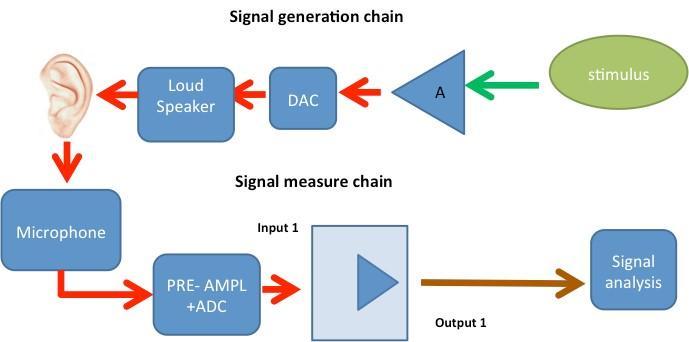As has been known for several years, the environments of the International Space Station are relatively noisy. Various equipment in operation, environmental control systems, and crew activities produce continuous background noise even during the astronauts’ rest periods; Added to this is the constant exposure to microgravity. What effect do all these factors have on astronauts’ hearing abilities during long-duration space missions? Is it possible to implement countermeasures to counteract any negative effects? Are these adverse effects, if any, transient or permanent?
To all these questions, the experiment has been trying to answer since March 2019 Acoustic Diagnostics On board the International Space Station.
Investigation Developed in-orbit acoustic diagnostics (Acoustic Diagnostics) monitors the hearing capabilities of ISS crew members before, during and after flight in order to detect potential adverse effects of in-flight noise and microgravity on their hearing system.
a description
Monitoring the effects of microgravity and the acoustic environment on board the station as a function of time spent on board is important for identifying the warning symptoms of mild hearing impairment. These effects can be temporary or permanent and can lead to even greater hearing damage on future long-duration space exploration missions.
Microgravity conditions can affect the body’s hydrostatic balance by increasing fluid pressure in the head and thus disturbing the transmission to the middle ear. pressure abnormalities in shellFinally, they can damage structures.
Investigation Acoustic Diagnostics It aims to aid in a better understanding of whether hearing safety is a critical issue for designing future long-term missions and what countermeasures, if any, may be required. However, performing audiometric tests in a noisy environment such as that of the International Space Station, is a sensitive process that requires a certain type of test based on acoustic emissions (AutoAcoustic Emissions. acoustic emission – OAE).
OAEs are sounds our inner ear produces in response to an audio stimulus with the goal of gathering information to send to our brain. In the inner ear there are hair cells that act as sensory receptors and respond to external sounds with vibration; This same vibration produces a very faint sound that reverberates in the middle ear and can in turn be picked up by special headphones and recorded by the appropriate hardware.
The OAE-based test used in acoustic diagnostic research is an objective test, does not consider the active participation of the subject and is not affected by environmental noise because it uses specific acoustic stimuli. An OAE test is useful to see how well the inner ear and cochlea are working.
The development of portable devices capable of performing accurate audiological diagnoses in a noisy environment could also be useful in occupational medicine applications, in noisy industrial environments, for detecting temporary or permanent effects on the hearing abilities of noise-exposed workers. Of course, the advanced diagnostic system studied for this research could have various other clinical applications on Earth as well.
proces
Two crew members make three measurements during the flight with an interval of two months; They also take one measurement before the flight and two after the return. After each session the data is transmitted to Earth. Astronauts must follow a specific series of events: calibration in the ear canal, OAE testing and data transmission by means of a special program. The duration of each session is 75 minutes. The subject turns on the laptop and puts on headphones to take sound measurements and use the Astronaut app Everywhere To answer the questionnaires.

Developed by the University of Rome’s Department of Physics Tor Vergata, sponsored by the European Space Agency, the experiment runs from March 2019 to September 2023 and includes missions 59/60, 61/62, 63, 65, 66, 67, 68 and 69.
Like her colleagues who preceded her and will follow, Samantha Cristoforetti will also take part in this as well as in other experiments planned during her mission in Minerva.
In the next two videos, it is possible to constantly notice the background noise that characterizes the environments of the USOS part (Tropical part of the United States) from the station. It’s a bit outdated, but the current audio situation hasn’t changed much today.
In this other video we can see the biggest noise on the Russian side of the station.


“Infuriatingly humble alcohol fanatic. Unapologetic beer practitioner. Analyst.”








Leave a Reply